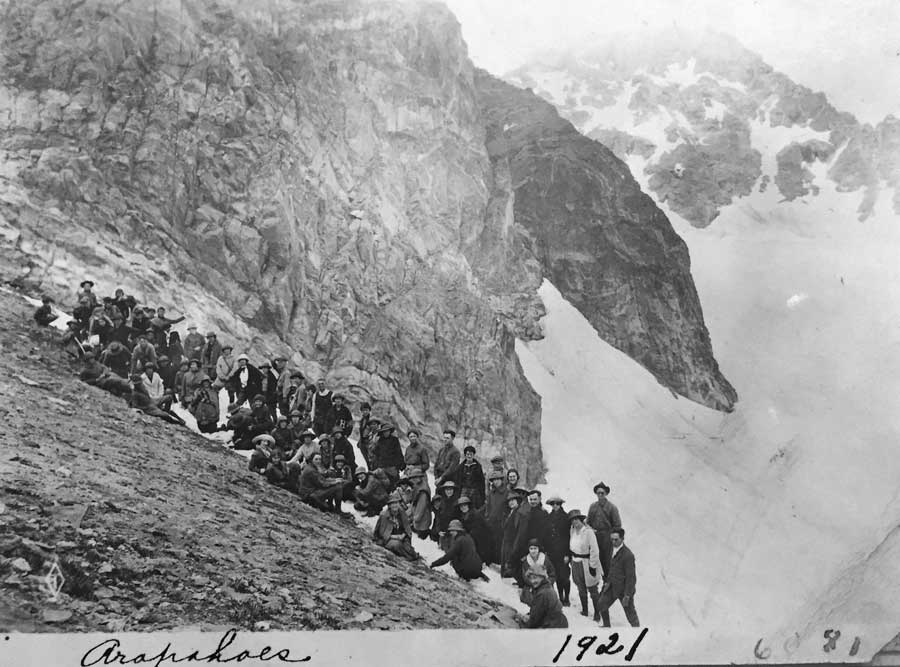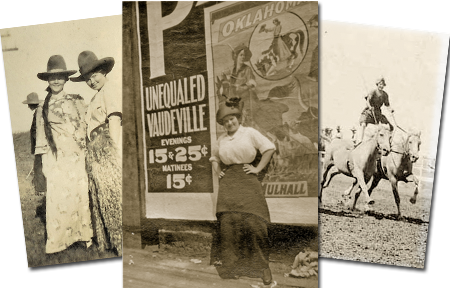We have maps and apps to guide us. Do we still need a club?
By Kay Turnbaugh
Imagine living and working in the pioneer town of Boulder in the late 1800s or early 1900s. The wild mountains beckoned to the west, but not many people had a wagon or a car, and only a daring few ventured onto the rugged dirt roads. And once those roads petered out, there were no trails. You needed to find a guide, someone you could trust.
Thousands of people found that guide in the Rocky Mountain Climbers Club. It started in 1898 as the Colorado Chautauqua Climbers Club, a group of Boulder folks who wanted to have fun in the outdoors and who also were concerned about environmental conservation. The club reorganized in 1912 as the Colorado Climbers Club, and became known as the Rocky Mountain Climbers Club.
In 1913 the club had 200 new members. Annual dues were $1; life dues were $10. The club met in a room at Chautauqua, and conducted walks and weekend excursions during July and August. A 10-day outing in 1918 took members to Wild Basin and Longs Peak. In the early ’20s, the club was so popular that one year 2,300 people went on RMCC climbs and the club served 4,500 meals (a “hamburger steak fry” cost 25 cents).
In 1913 the club had 200 new members. Entrance fee and annual dues were $1. Life dues were $10. The club met in their room in the community house in Chautauqua and conducted walks and weekend excursions during July and August. A 10-day outing in 1918 took members to Wild Basin and Longs Peak. In the early ’20s, the club was so popular that one year 2,300 people went on RMCC climbs and 4,500 meals were served by the club. ‘Hamburger steak fries’ were 25 cents.
Pictures in the club’s scrapbooks attest to its popularity. Long lines of hikers on the trails west of Eldora, group photos on Flagstaff, club members perched on rocks below Royal Arch. You didn’t have to be a climber to join the club, all their outings were considered ‘climbs.’ There were five degrees of membership based on the number of hikes a member did and how high they went. You reached the fifth degree of membership when you summitted Longs Peak.
Some of the ‘climbs’ were jaunts to nearby locations suitable for any kind of hiker, others were multi-day excursions to locations further afield. A five-day outing to Arapahoe Glacier in 1913 required “warm underclothing, mountain shoes, raincoat, bedding, character references, ability to walk ten miles per day and agreement for absolute obedience to guides.”
“When you think about it, just the logistics of loading the wagons or trucks for hundreds or thousands of participants probably took a good part of a day. Then it took most of a day to drive in to the start of the hike,” says today’s club president Pete Arts.
Ninety-nine years ago the RMCC contributed funds to help build the Community House in Chautauqua Park. The club maintains perpetual ownership of their elegant meeting room in the lower level where members host potlucks, talks and slideshows. During the winter they go on hikes like Doudy Draw, weather permitting. In the summer they hold events at the club’s cabin at Peterson Lake near Eldora Mountain Resort. The club bought the cabin in 1953, and rebuilt it after it burned down in 1978.
Last year, Bill Briggs, one of Boulder’s renowned climbers, gave a presentation about ‘Running the Rim’ of local peaks. The club has hosted travelogues and programs from Boulder County Open Space department, and a raptor rehabilitation program brought a hawk to their summer cabin.
Today, membership in formalized hiking and climbing clubs has declined. Arts speculates that it’s because “people don’t want to make a commitment to a club when you can go out on your own.” Although strenuous climbs are in the past for most of today’s members, “we still have that pioneer spirit, and we still support environmental initiatives.” For those who are seeking camaraderie and fellowship, or who want to learn more about local hiking trails, RMCC could be for you. The club has a Facebook page, or you can email them at RockyMtnClimbers@comcast.net.
Nederland resident Kay Turnbaugh is the author of The Last of the Wild West Cowgirls, Rocky Mountain National Park Dining Room Girl, and Images of America Around Nederland.
Read this story in Boulder Magazine


